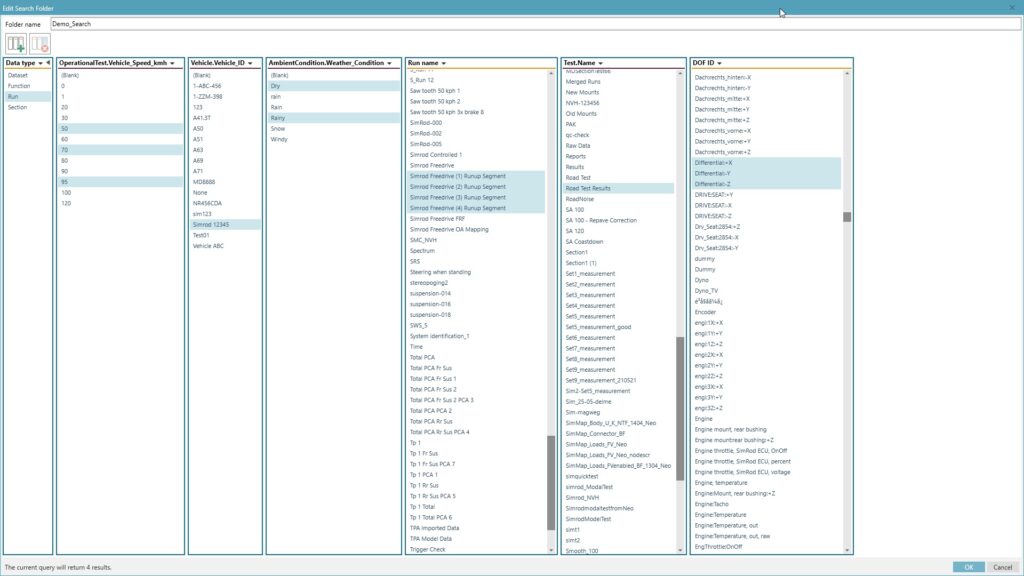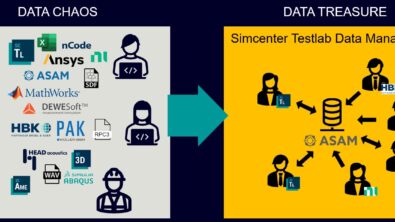Why test data management is essential for team collaboration


When introducing our new Simcenter Testlab Data Management solution, I often meet engineers who claim that they don’t need any data management solution. It is understandable that most engineers prefer new tools or technology to help them to create products or tackle difficult technical issues.
However, on various occasions, engineers did acknowledge that they spend a considerable amount of time on finding back data or even re-measuring data because the original data was not available anymore. Still, taking the next step to invest in a solution to manage test data is not yet their priority. Does this sound familiar?
Collaborate in an efficient way
Over the past decade, the size of engineering teams may not have grown as fast as the frequency of launching new products in the markets and the volume of testing associated with that. Limited IT infrastructure, such as company shared directories are considered good enough in most companies to share data among team members and even across teams.
Some thoughtful engineers adopted very comprehensive ways to annotate their folders and files structure and names on a shared directory. This surely worked and is still often the default approach. But just like how we have a hard time imagining our workplace without a document-management system like Sharepoint, it is, for many, difficult to imagine the efficiency gain that a test data management system brings over the default shared directory approach.
We embraced the document management system for important reasons: the document security it brings, the fact that colleagues can easily share documents, and, last but not least, the ease of use.
I would like to introduce you to our data management solution designed for test engineers. Simcenter Testlab Data Management was first introduced with Simcenter Testlab 2021.1. It is a client/server application using a SQL database. The data server is an ASAM-ODS data server, allowing engineers to structure and organize their (test) data according to the ASAM-ODS standard, with the mindset to provide a solution infrastructure in which engineers can continue to use their day-to-day tools to measure and to process and analyze, no matter where the data is actually stored.
Get more insight by comparing to other test data
Did you ever need to compare the performance of your product with a competitor or with your own earlier generation versions? Or simply compare data measured in different operating conditions and under different loads? Have you ever found that the engineer who measured the original data, had moved to another department? Even if found in a hard-to-identify location, the data was most probably not or poorly annotated and thus are unreliable as a reference.
While working together with you and your team during the journey to adopt a state-of-the-art data management solution, one of the important aspects is to create a proper data model. Such data model – compliant with the NVH application model of the ASAM-ODS standard – defines the contextual information such as the Unit Under Test, the Test Sequence and the Test Equipment. By adequately defining the data model, all future data gets annotated consistently within the team or even across multiple teams. Annotated data are published in the ASAM-ODS database, serving as a pool of completely and consistently documented data so users from different engineering teams can make use of it. This approach ensures the reliability of the data and maximizes the use of existing data to get more insight.

Seamlessly integrated in Simcenter Testlab
From collecting and publishing validated data to searching, retrieving and further processing such data, all tasks happen in Simcenter Testlab, using the Simcenter Testlab Data Management client add-in. This then establishes a client connection with the Simcenter Testlab Data Management Server.
There is no need to learn new tools to search and find data and download them – a new entry “central data” is directly available under the navigator tree of Simcenter Testlab.
Talking about tools, the blog post for Simcenter Testlab 2021.1 : The power of context-driven data visualization provides a first glance at how to use Testlab Reports to compare data in an efficient way. Simcenter Testlab Data Management 2021.2 presents the same Testlab Report with query concept.
The query concept allows you to create and populate a report, using data stored in the ASAM-ODS server, which engineers can easily share with other colleagues. Moreover, such a dynamic Testlab Report also allows users that have access to the ASAM database to modify and extend the data visualized in the report. For example, to easily view and compare data from another measurement node used in the same test, or to do the comparison for another operating condition. As long as the parameter is part of the query definition and the data is available, the Testlab Reports are truly dynamic.
Do you want to take your team data management to the next level? Explore the capabilities of Testlab Data Management and the new query-based Testlab Report as the backbone for your test data management.
Want to boost your team’s productivity?
Contact our local office for more information about the Simcenter Testlab Data Management solution.


